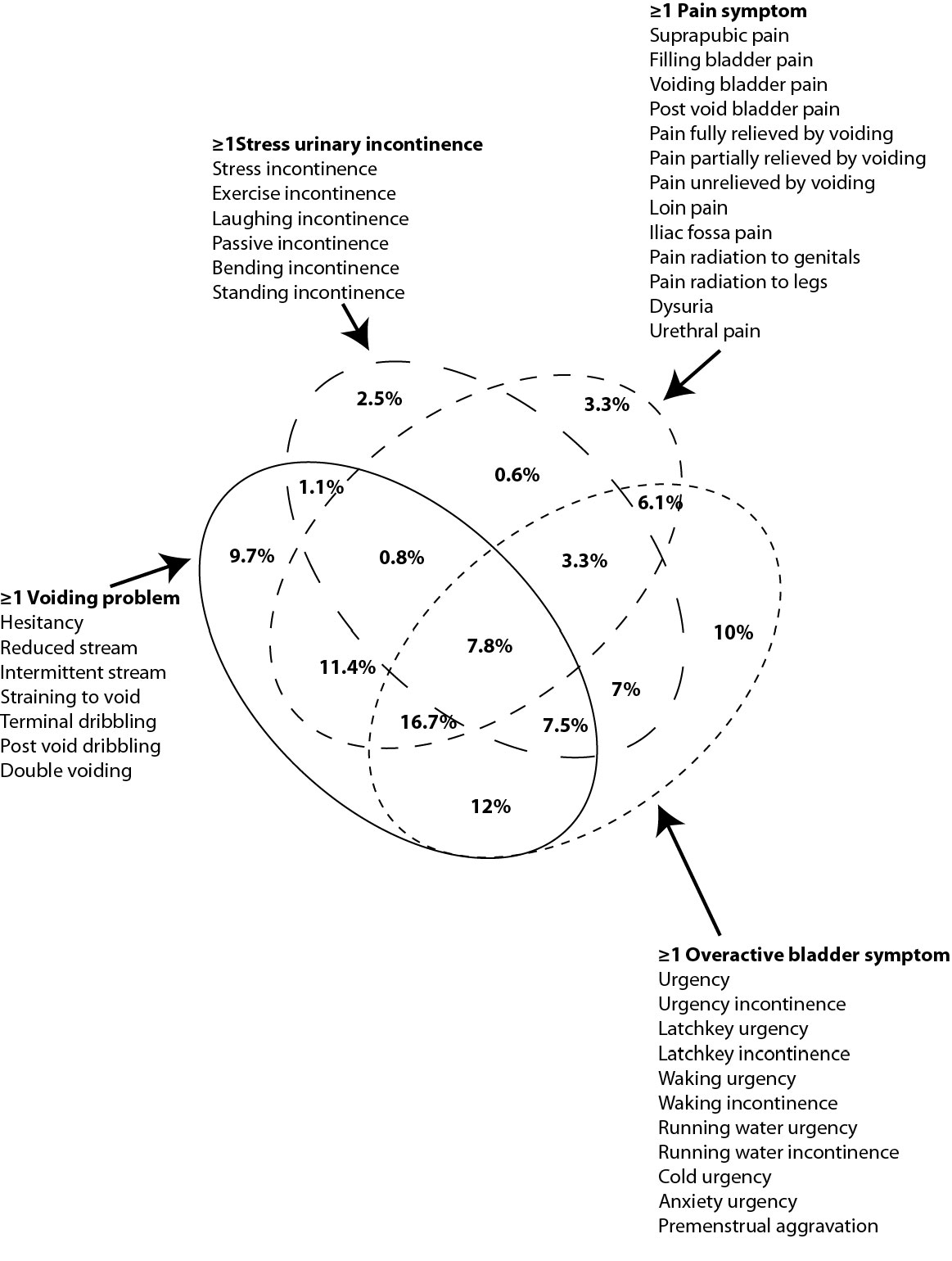Chronic UTI Symptoms
UTI symptoms
The following symptoms are based on patient data collected by leading global UTI expert, the late Professor Malone-Lee, from University College London. Symptoms fall into four categories—pain, voiding, overactive bladder and urinary incontinence1. You can have symptoms from all four categories, or just one.
Despite popular belief, you do not need to have burning/painful urination (dysuria) to have a UTI. This is considered a ‘classic’ acute UTI symptom. However, dysuria is far less common with chronic UTI.
The Venn diagram further down is based on patients at the London clinic and shows the distribution of symptoms from the four different categories2.
STRESS URINARY INCONTINENCE
Stress Urinary Incontinence
Cough/sneeze incontinence
Exercise incontinence
Laughing incontinence
Passive incontinence
Bending incontinence
Standing incontinenc
Voiding
Hesitancy
Reduced stream
Intermittent stream
Straining to void
Terminal dribbling
Post-void dribbling
Double voiding
Pain
Supra pubic pain
Filling bladder pain
Voiding bladder pain
Post-void bladder pain
Pain fully relieved by voiding
Pain unrelieved by voiding
Loin pain
Iliac Fossa pain
Pain radiating to genitals
Pain radiating to legs
Dysuria (painful urination)*
Urethral pain
Over Active Bladder
Urgency
Urgency incontinence
Latchkey urgency
Latchkey incontinence
Waking urgency
Waking incontinence
Running water urgency
Running water incontinence
Cold urgency
Anxiety urgency
Premenstrual aggravation
Symptoms triggers
Patients report common triggers that can bring on or increase their symptoms include:
- sexual intercourse
- internal gynaecological procedures
- vigorous exercises such as horse
- riding and cycling
- stress
- bowel movements
- alcohol
- some foods that individuals are sensitive to.
